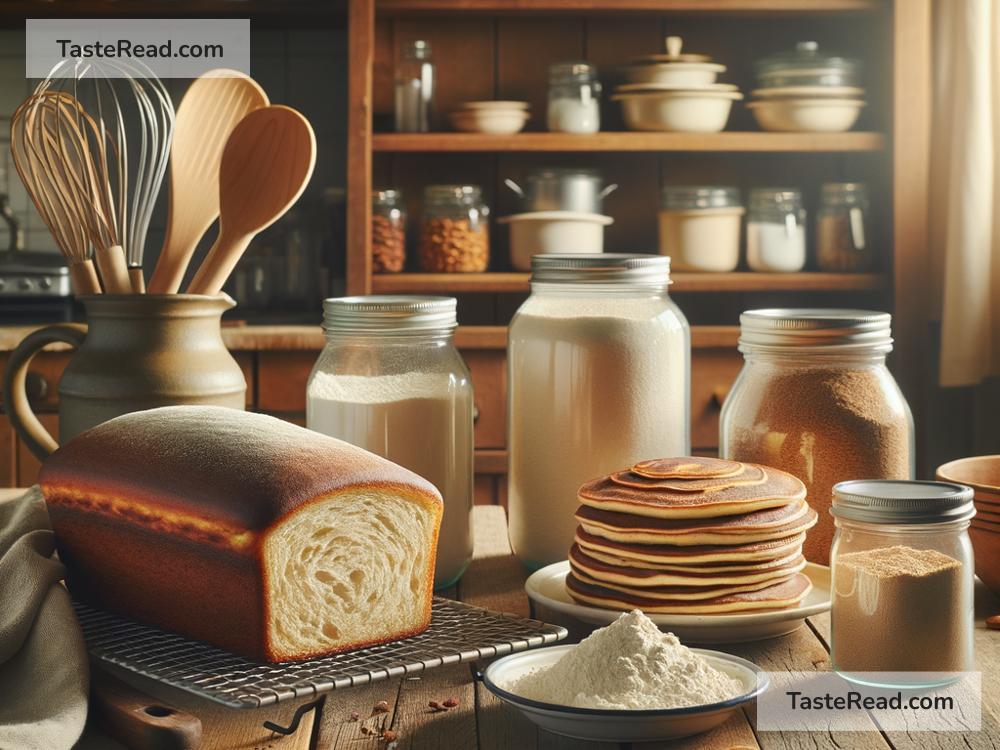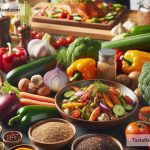How I Transformed Traditional Recipes into Gluten-Free Versions
Being faced with the challenge of adapting to a gluten-free diet can feel like a culinary upheaval, especially if you’re deeply attached to traditional recipes that have been passed down through generations. Suddenly, beloved foods seem off-limits, and mealtime can lose its joy. But it doesn’t have to be that way. I embarked on a journey to transform these traditional recipes into gluten-free versions that could bring back the joy of cooking and eating without compromising on taste or texture. Here’s how I did it.
Starting with Research
The first step in my journey was to understand gluten. Gluten is a protein found in wheat, barley, and rye, and it’s responsible for the elasticity in doughs, helping bread rise and acquire a chewy texture. Realizing that I’d need to find alternatives that could mimic these properties without the gluten, I plunged into research. I discovered a world of gluten-free flours, each with unique properties: almond flour, coconut flour, brown rice flour, and many others. Armed with this new knowledge, I felt ready to dive into the world of recipe adaptation.
Experimentation is Key
I quickly learned that there isn’t a one-size-fits-all formula for replacing traditional flours with gluten-free ones. Each recipe required its unique touch and sometimes a bit of trial and error. For example, converting my grandmother’s traditional bread recipe called for a mix of brown rice flour for its mild flavor and xanthan gum to replace gluten’s elasticity. It took several attempts to get the ratios just right, but the result was a gluten-free bread that had the familiarity of the original, without the gluten.
Understanding the Alternatives
Navigating through the different gluten-free flours was like learning a new language. Almond flour was great for dense, moist baked goods, while coconut flour absorbed a lot of moisture and was perfect for lighter recipes. Tapioca and potato starch could bring a bit of the chewiness that gluten provided. And psyllium husk could offer the bread a bit of the structure it was missing. By understanding the properties of each, I could mix and match them to get closer to the textures and flavors of the traditional versions.
Incorporating New Ingredients
Meeting the challenge of gluten-free cooking also meant embracing ingredients I hadn’t frequently used before. For instance, to bind ingredients together, since gluten wasn’t there to do the job, I found alternatives like flaxseed meal and chia seeds, which, when mixed with water, could mimic the sticky, binding quality of gluten. Not only did these ingredients help hold my creations together, but they also brought additional nutritional benefits to the table.
Sharing and Feedback
One of my biggest motivators was sharing these gluten-free adaptations with friends and family. Not only was it a joy to see them enjoy traditional dishes once off-limits, but their feedback was invaluable. Each critique helped me refine the recipes further, adjusting here and there until I felt I had matched the traditional recipes as closely as possible, without any trace of gluten.
Persistence Pays Off
The journey wasn’t without its frustrations. There were failed experiments, dishes that didn’t quite hit the mark, and moments of doubt. But with each setback, I learned something new. Maybe it was a small adjustment in flour ratios, a tweak in the baking time, or simply the realization that some recipes needed a complete overhaul to work without gluten. Persistence, I found, was my most valuable ingredient.
The Joy of Success
The moment you nail a gluten-free version of a beloved traditional recipe, the feeling is unbeatable. The joy of watching someone who’s had to avoid gluten dig into a plate of your gluten-free pasta or slice of bread, and see their eyes light up with pleasure, is profoundly rewarding. It’s a testament to the love and effort that goes into food, transformed but not diminished by the absence of gluten.
To Wrap Up
Transforming traditional recipes into gluten-free versions has been a journey of discovery, creativity, and, most importantly, persistence. It has taught me that limitations, dietary or otherwise, can lead to innovation in the kitchen. If you’re embarking on a similar gluten-free journey, know that patience and experimentation will lead to success. Embrace the challenge and enjoy every bite of your culinary creations, knowing they’re not just good, they’re good for you.


